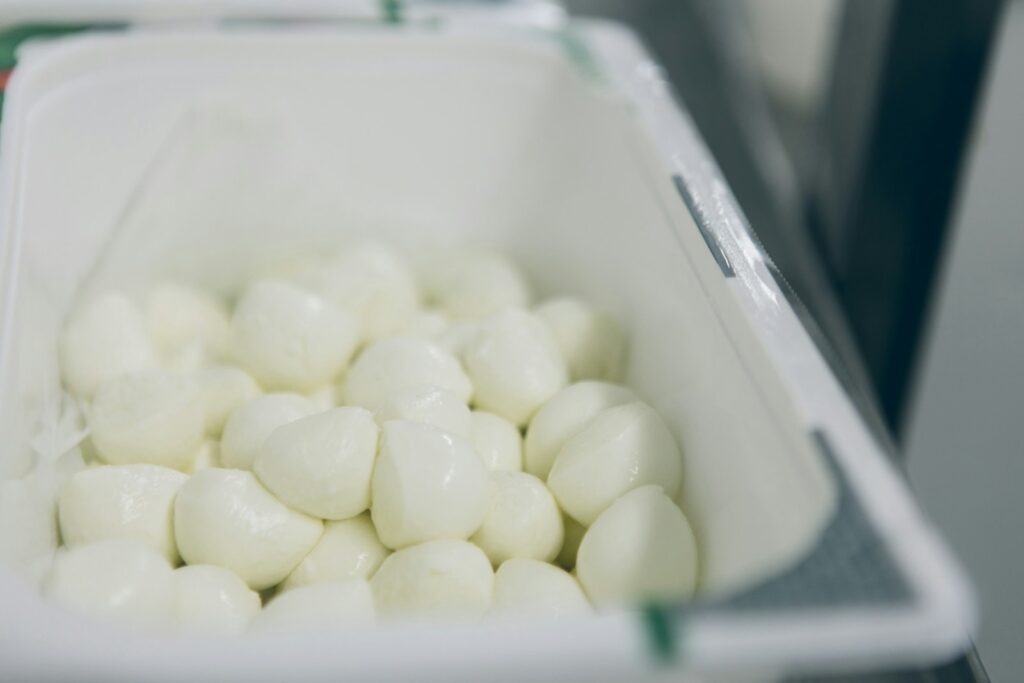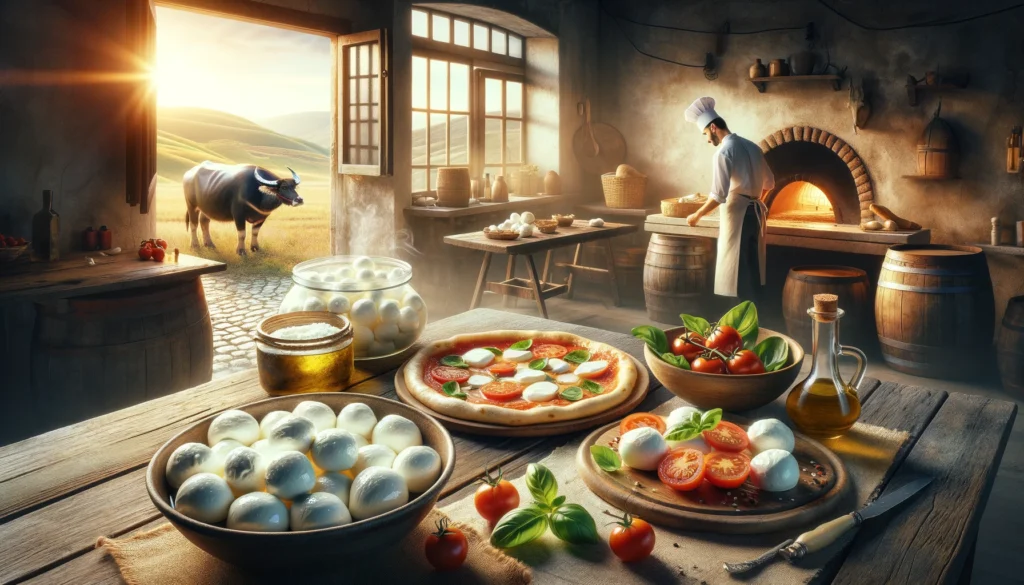14 Facts About Mozzarella

Mozzarella is one of the most popular and beloved cheeses in the world. Known for its mild, milky flavor and soft, creamy texture, this Italian cheese has become a staple ingredient in countless dishes.
But there’s more to mozzarella than its meltability and flavor. This cheese has a fascinating history and background behind it.
Here are 14 interesting facts about mozzarella that you may not have known:

Introduction
Mozzarella traces its origins to southern Italy, where it was first made from the milk of water buffaloes grazing in the marshes and pastures of Campania and Lazio. Its name comes from the Italian word “mozzare” meaning “to cut off” referring to the process of cutting and kneading the curd by hand during production.
Over the centuries, mozzarella gained popularity across Italy and then internationally as a delicious cheese used as a topping for the now iconic Neapolitan pizza. It became a specialty of the Campania region, especially around Naples and the Amalfi Coast.
Today authentic mozzarella di bufala Campana is protected with the prestigious DOP designation to maintain quality standards and production methods. While cow’s milk versions are more common outside Italy, traditional water buffalo mozzarella is still highly prized.
From its tangy flavor to its meltability, mozzarella has unique properties that have made it an essential ingredient. Let’s explore some fascinating facts about this exceptional cheese:

Facts About Mozzarella
- Mozzarella dates back to the 12th century. According to historical accounts, mozzarella has been made in southern Italy since the 12th century when monks used buffalo milk to produce the soft, white cheese. Food historian John Dickie notes its early origins along the Amalfi Coast and links to monasteries near Naples.
- Water buffalo milk is ideal for stretchy texture. The high fat and protein content of water buffalo milk gives mozzarella its distinctive stretchiness and meltability. When heated, the proteins unfold allowing the cheese to beautifully melt without separating from the fat and liquid.
- “Pasta filata” refers to the unique cheese-making process. Authentic mozzarella is made using the pasta filata method which in Italian means “spun paste.” First, rennet is added to buffalo milk to form curds which are cut and immersed in hot whey or water. The heat makes the curd elastic so it can be kneaded and stretched before being rolled into balls or braids.
- Mozzarella was originally sold in water or whey. To preserve freshness, freshly made mozzarella balls were traditionally sold packed in containers of saltwater or whey. The water kept the cheese moist and added a subtle salty flavor. Today mozzarella is mainly sold vacuum-packed in plastic.
- Its flavor differs based on age. Young, soft mozzarella has a mild, delicate flavor and tender texture perfect for Caprese salads. More aged mozzarella becomes drier and more salty with a stronger, tangier flavor that stands up well to cooking.
- Water buffaloes now outnumber people near Naples. There are estimated to be nearly 300,000 water buffalo in the Italian region of Campania surrounding Naples compared to a human population of around 220,000. Buffalo mozzarella production is a major industry and livelihood in the area.
- Mozzarella became popular overseas after WWII. Soldiers stationed in Italy during World War II developed a taste for mozzarella cheese and helped drive its popularity back home after the war ended. As Italian cuisine grew trendier in the 70s and 80s, so did mozzarella.
- Its versatility makes it a culinary staple. Melty, stretchy mozzarella is considered the perfect pizza cheese but it also shines in pastas, salads, sandwiches and more. Both fresh and aged mozzarella add flavor to a multitude of dishes in the Italian kitchen and beyond.
- Consumption in the U.S. tops a billion pounds per year. Americans eat an average of 11 pounds of mozzarella per capita annually. Total consumption now exceeds a billion pounds a year as the cheese has become more incorporated into mainstream cuisine.
- California produces the most mozzarella in America. Wisconsin might be known for its cheddar but California makes the most mozzarella in the U.S. Major production centers are located mostly in Southern and Central California which have ideal dairy conditions.
- Mozzarella doesn’t require aging to develop flavor. Unlike most cheeses, mozzarella does not need to be aged for flavor development. It can be eaten immediately fresh for a softer texture and clean, milky taste that pairs perfectly with summer tomatoes.
- Low moisture is better for melting. Fresh mozzarella has a high moisture content of over 50% making it juicy but prone to leaking liquids when baked. Low moisture mozzarella made for pizza with around 45% moisture browns better and delivers perfect stretchy meltability.
- It has several possible health benefits. Studies suggest mozzarella delivers bioactive proteins and fatty acids that may boost heart health, antimicrobial activity, and immune function. The cheese is an excellent source of bone-strengthening calcium and vitamin B12.
- Global demand continues to grow. As Italian food remains popular worldwide, global appetite for mozzarella cheese keeps increasing. Buoyed by its starring role on pizza, mozzarella is expected to be a leading driver of cheese sales for years to come.
Conclusion
From its hand-stretched artisanal origins to its leading role in topping billions of pizzas, mozzarella has certainly come a long way while remaining an icon of Italian cuisine. Its meltability and subtle flavor make it extremely versatile for cooking and snacking.
This fresh cheese also delivers beneficial nutrients like protein, calcium, and probiotics. As global demand for mozzarella continues to grow, its future looks as bright as its glistening white color. Whether discovering it for the first time or enjoying it for the hundredth time, mozzarella always satisfies.
FAQ about Mozzarella Cheese
What is mozzarella cheese?
Mozzarella is a semi-soft cheese from Italy, traditionally made using the pasta filata method. It can be made from cow’s milk, buffalo’s milk, or, less commonly, sheep’s or goat’s milk.
What are the different types of mozzarella?
Types include fresh mozzarella, low-moisture mozzarella for pizza, smoked mozzarella, and regional varieties such as mozzarella di bufala, which is made from Italian buffalo milk.
Can mozzarella cheese be eaten fresh?
Yes, fresh mozzarella is traditionally served the day after it is made and can be kept in brine for up to a week or vacuum-sealed for longer periods.
How is mozzarella used in cooking?
Mozzarella is commonly used on pizzas and in pasta dishes. It can also be enjoyed fresh with tomatoes and basil in a Caprese salad or used in various appetizers.






